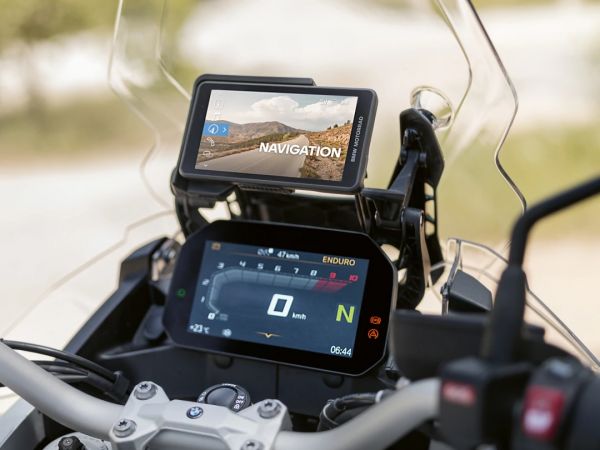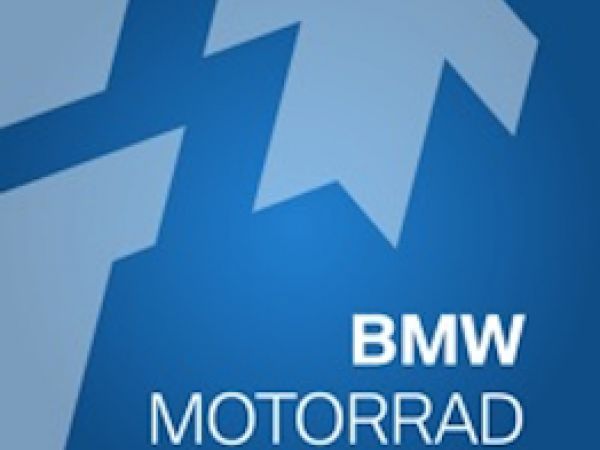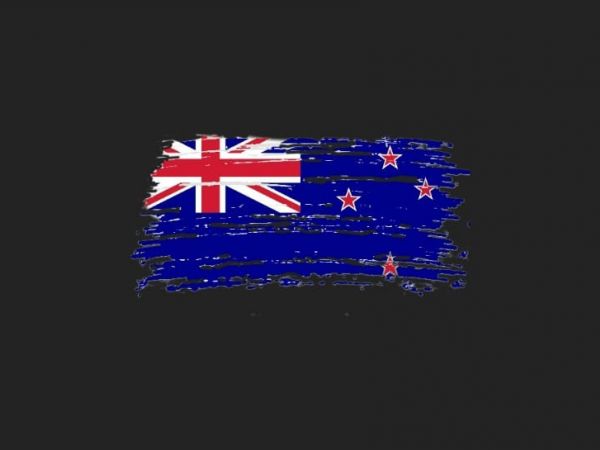Traffic regulations in Europe - Germany
Traffic regulations in Europe - Germany
Kategorija: Prometni propisi u Europi
What should be considered on a motorcycle tour to or through Germany? What documents do you need to bring with you? MotoGS WorldTours and MotoGS Rental provide you with answers to your most important questions.
Errors and omissions excepted - all information without guarantee.
Basics:
Germany is a member state of the EU. Therefore, it makes entry very easy for all EU citizens. But even for non-EU citizens, the entry option is usually very uncomplicated.
Vehicle papers and other necessary documents:
The vehicle registration document or the registration certificate part I is mandatory.
The EU driver's license is accepted in Germany, so you don't have to carry an international driver's license with you. For non-EU citizens, it is always advisable to have an international driving license with you in addition to the national driving license of the country of origin.
For a tourist stay for EU citizens, the national ID is perfectly sufficient. Of course, non-EU citizens must carry a passport.
All personal documents must be valid for at least 3 months upon departure.
With a rented motorcycle in Germany:
Basically not a problem, but riders who make trips abroad with a vehicle that is not registered in their name should carry a user permit with them to be on the safe side.
This license can be downloaded from the following link.
Requirements to be able to rent a motorcycle in Germany, you must be at least 18 years old (may vary depending on the motorcycle category and local rental company). As a rule, however, the rental stations require a minimum age of 21 years. For riders under 21, sometimes even under 23 years of age, young driver surcharges are often required.
Health insurance:
In principle, all travelers to Germany, regardless of their country of origin, should take out international health insurance. This can also be done easily here via Global Rescue. Surely this type of insurance protection is a bit more expensive than other providers. However, as the name suggests, this type of coverage is built on Rescue. Therefore not comparable. However, this should not be understood as advertising, it is a simple recommendation.
Helmet obligation and protective clothing:
Theoretically, motorcycling in Germany is allowed with sneakers and jeans. The road traffic regulations do not make any special specifications for protective clothing. However, it is absolutely advisable to protect yourself with appropriate protective equipment. These include gloves, motorcycle boots, kidney belt and a jacket and trousers equipped with protectors. Only wearing a protective helmet is mandatory. This must be provided with the ECE standard 22/06 in order to be suitable. Riding without a safety helmet is punishable by a fine of 15 euros.
Pay Attention: Even in the case of an accident through no fault of your own, German courts have in the past awarded partial blame to motorcyclists without adequate protective clothing.
Safety vest and first-aid kit:
Only one vest per vehicle is required by law and this also applies to motorcyclists. All motorcycle riders who are forced to leave the motorcycle in the event of a breakdown or accident outside of built-up areas must wear a safety vest. A first aid kit or a warning triangle does not have to be carried. However, it is always advisable to have a motorcycle warning triangle, a small first aid kit and a warning light with you just in case.
Maximum speeds in Germany:
A general speed limit of 50 km/h is prescribed for all motor vehicles within built-up areas.
Outside built-up areas, the speed limit is 100 km/h.
Mandatory speed limit on motorways. With regard to motorcycles and cars, the maximum speed on the motorway is a special case. There is no speed limit on some sections of the route, the so-called recommended speed of 130 km/h applies here. If the traffic situation and weather conditions permit, it is also permitted to exceed these and test the maximum speed of your own motorcycle.
In general, the following should also be observed with regard to the maximum speed:
Anyone riding a motocycle may only ride so fast that the vehicle is under constant control. In particular, the speed must be adapted to the road, traffic, visibility and weather conditions as well as personal abilities and the properties of the vehicle and load. If visibility is less than 50 m due to fog, snowfall or rain, you may not ride faster than 50 km/h unless a lower speed is required.
Special features for motorcyclists:
Motorways and expressways, overtaking on the breakdown lane and through the rescue lane:
In a traffic jam on a motorcycle, simply overtaking on the right or using the rescue lane to make faster progress is not permitted in Germany. Overtaking on the right is generally forbidden outside of built-up areas, and the road traffic regulations do not provide for any exceptions for motorcyclists either. Instead, a fine of 100 euros is threatened. The unlawful use of the rescue lane is punished even more severely, since it is essential to keep it free for the police, fire brigade and rescue service. Anyone who still uses them must expect a fine of at least 240 euros.
In stopped and waiting traffic, e.g. in front of a red traffic light, riding between the stationary cars and riding up to the red traffic light, although very popular among motorcyclists, is officially forbidden. This is referred to as an inadmissible overtaking manoeuvre, since a side safety distance of one meter can rarely be maintained. That can easily cost 100 euros.
Voices are raised again and again to allow motorcyclists to ride through traffic jams - either through the emergency lane between the two lanes or on the breakdown lane. But the German legislator has decided several times that the ban on riding through remains.
From a legal point of view, motorcyclists should continue to line up like cars and hope that the traffic jam will clear up soon. Even when you must stop in strong sunlight, with a hot engine of your motorcycle between your legs, and it becomes almost unbearable. Many car drivers, possibly also motorcyclists themselves, show understanding for this problem and have insight and let the motorcyclists pass. Many motorists even support the faster progress of motorcyclists through the traffic jam. However, this mutual consideration does not exclude the ban on riding through.
Stopping on the highway e.g. during a rain shower:
Stopping under the motorway bridge on the breakdown lane or generally on the breakdown lane and waiting for the end of the rain shower is not only dangerous but also prohabided. The breakdown lane is only for emergencies use and that does not include rain.
Always switch on daytime running lights:
Unlike cars, motorcycles must always have daytime running lights. In poor visibility conditions, such as fog, rain or in the dark, the dipped headlights must be switched on. If you forget to do so, you risk a fine of 10 euros. If an accident occurs as a result, even 35 euros are due.
Tricks and stunts with the motorcycle:
Stunts with the motorcycle, no matter how cool it may be for one or the other, are absolutely prohabided. Risk-taking motorcyclists like to try tricks and stunts with their machines. But already hands-free riding is strictly forbidden in Germany and will be punished with a fine of 5 euros. Anyone who only uses the rear wheels to ride (wheelie) and thereby endangers others must be prepared for a fine of 50 euros.
Parking on the sidewalk:
Motorbikes parked on the sidewalk can be seen again and again. But that is not always allowed. Motorcycles may only be parked there if a traffic sign allows parking on the sidewalk. Basically, motorcycles are only allowed to park where cars are allowed to park. If a sign indicates a parking ban, this applies to cars and motorcycles alike. If you park your motorcycle on the sidewalk, you risk a fine of 55 euros.
Toll obligation:
In Germany there is generally no obligation to pay a toll for motorcycles (and cars). So neither a vignette obligation nor any other kind of obligation to pay for the use of highways, expressways, tunnels or bridges.
Alcohol determination:
The alcohol limit for motorcyclists is the same as that for car drivers. This means that from 0.5‰ there is an administrative offence, from 1.1‰ one speaks of drunken riding and if there is an accident, a value from 0.3‰ can already be considered drunken riding.
Environmental zones and environmental stickers:
In Germany, like in the rest of Europe, there are certainly environmental zones and environmental stickers. However, the fact is that motorcycles can go to all areas and all cities without having to worry about any sanctions.
Correct behavior in the event of an accident or breakdown:
Accidents involving personal injury must be reported to the police immediately. If there is property damage, it is also recommended to use the European Accident Report.
The emergency numbers in Germany:
112 for fire and rescue services,
110 for the police,
116117 for the medical on-call service and
19222 for a necessary patient transport.
As of 07/01/2023

TAGS
no speed limit neuschwanstein castle european accident report emergency numbers in germany 110, 112, 116117, 19222Podijeli svoje mišljenje
Podijeli svoja iskustva, pitanja ili prijedloge!
Komentari drugih motorista
Još nitko nije komentirao – što ti misliš?
Blog kategorije
Moto Ture

* Balkan-Italija Moto Avantura
Otprilike 3750 km!
14 dana putovanja kroz 5 zemalja!
15 noćenja + 2 noćenja na trajektu!

* Balkan-Karpati-Albanske Alpe Moto Avantura 2
Otprilike 5050 km!
21 dana putovanja kroz 7 zemalja!
26 noćenja!

* Balkan-Rumunjska Moto Avantura
Otprilike 3500 km!
11 dana putovanja kroz 5 zemalja!
12 noćenja!

* Balkan-Karpati-Albanske Alpe Moto Avantura 1
Otprilike 4055 km!
15 dana putovanja kroz 7 zemalja!
18 noćenja!

* Hrvatska-Italija-Francuska Moto Avantura
Otprilike 3550 km!
15 dana putovanja kroz 4 zemalja!
17 noćenja + 1 noćenje na trajektu!

* Hrvatska-Sicilija-Amalfijska Moto Avantura
Otprilike 4390 km!
18 dana putovanja kroz 3 zemalja + Sicilija !
20 noćenja + 1 noćenje na trajektu!

* Novi Zeland Moto Avantura
Otprilike 6650 km!
20 dana vožnje kroz Južne i Sjeverne otoke!
24 noći + 1 noć na kruzeru!

Croatia - Route des Grandes Alpes, July 2025
2 Americans - 1 boy and 1 girl, 1 motorcycle - a BMW R1250GS, one motorcycle tour and one goal ...

Balkans - Romania Tour, June 2025
At the end of June 2025, the time had finally come. Between June 23 and June 25, all participants in this tour gradually arrived in Trogir.

Balkans - Italy Tour, May 2025
Together we covered about 3700 km, crossing the Adriatic twice, from Durrës to Bari and from Ancona to Split.

Money protection in the event of insolvency
Money Protection Certificate according to § 651r and § 651w of the Civil Code of the Federal Republic of Germany ...

Packing list for a motorcycle tour
Pack your things and get going...

Travel planning and navigation
The next vacation is just around the corner, hopefully, and you've decided to finally ...

Riding a motorcycle in a group or alone?
Riding a motorcycle in a group or riding alone? Are you worried about safety, contact with other people ...

The International Driving Permit
Understanding the International Driving Permit (IDP). A Key to Smooth Overseas Riding for ...

BMW Motorcycle ConnectedRide Navigator
The new BMW Motorcycle ConnectedRide Navigator ...

BMW-ConnectedRide Cradle and Connected App
Riders of new BMW models have several options for using information and entertainment ...

Traffic regulations in Oceania - New Zealand
What should be considered on a motorcycle tour through New Zealand?

Traffic regulations in Oceania - Australia
What should be considered on a motorcycle tour through Australia?

